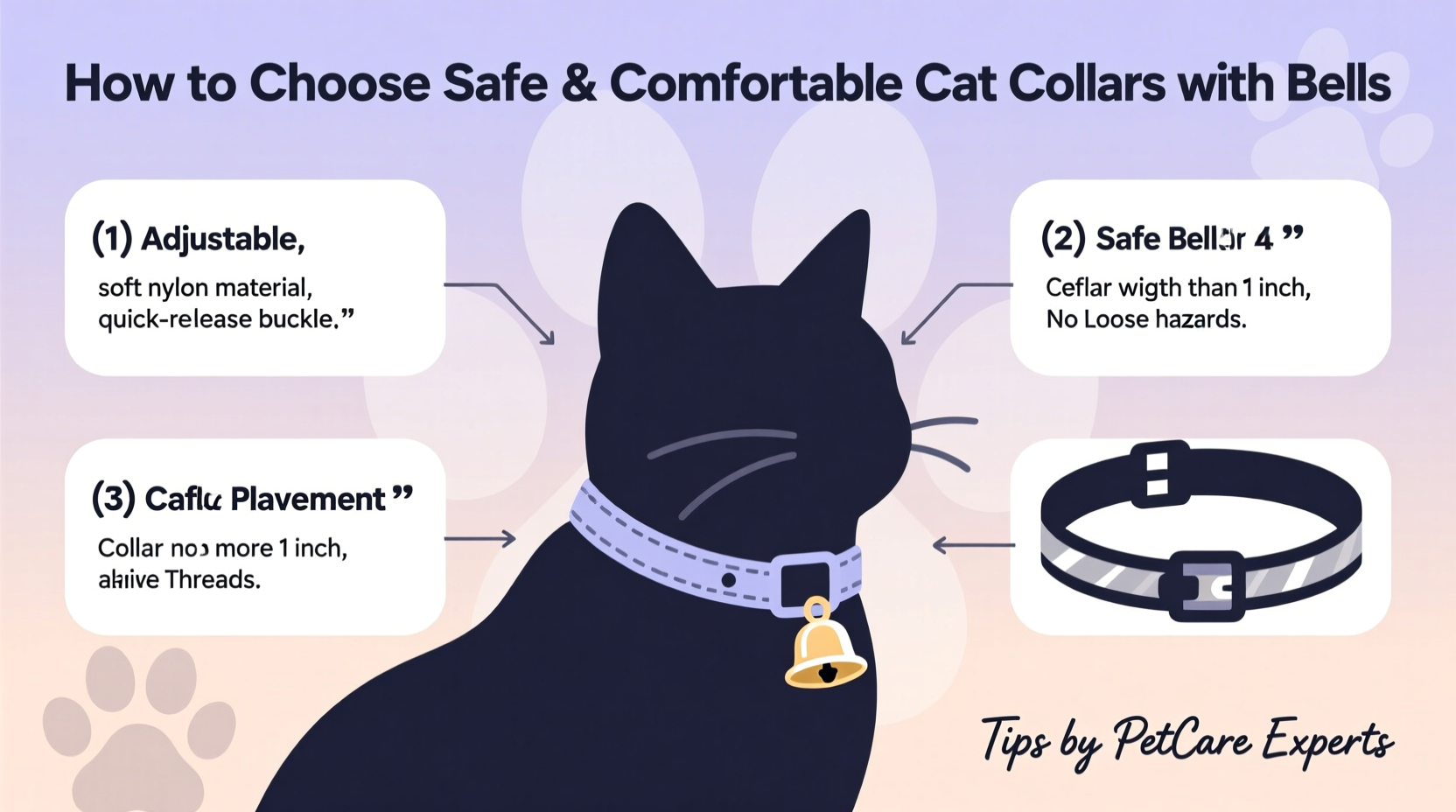Choosing the right collar for your cat goes beyond fashion or convenience—it's a matter of safety, comfort, and responsibility. While many pet owners appreciate the added awareness a bell provides when their cat is exploring indoors or outdoors, not all collars are created equal. A poorly designed or ill-fitting collar can lead to discomfort, injury, or even entanglement. Understanding what makes a cat collar both safe and comfortable ensures your feline companion stays protected without sacrificing mobility or well-being.
Why Cat Collars with Bells Matter

Collars serve multiple purposes: identification, visibility, and behavioral management. Adding a bell introduces an auditory cue that helps monitor your cat’s movements, especially if they’re indoor-outdoor hybrids. Research has shown that bells can reduce a cat’s success in hunting small wildlife by up to 50%, making them valuable tools for environmentally conscious owners.
However, the benefits only hold true if the collar itself doesn’t pose a risk. Unlike dogs, cats have delicate necks and unique escape behaviors. They may get snagged on branches, furniture, or fencing. This makes the design and fit of the collar critical.
Key Features of a Safe Cat Collar
A truly safe cat collar must include specific design elements that prioritize your pet’s well-being. These features are non-negotiable when selecting any collar, especially one with added components like bells.
- Breakaway clasp: The most essential feature. If the collar snags, it should release under pressure to prevent choking.
- Adjustable fit: Must allow snug but not tight placement—ideally, you should be able to fit one finger between the collar and your cat’s neck.
- Lightweight materials: Heavy collars strain the neck and discourage wear. Nylon and soft polyester are ideal.
- Secure yet gentle bell attachment: The bell should be enclosed in a protective housing to avoid direct skin contact and noise irritation.
- Reflective stitching (optional): Enhances visibility at night, particularly useful for outdoor roamers.
“Cats are masters at getting stuck. A breakaway collar isn’t optional—it’s a necessity.” — Dr. Lena Torres, DVM, Feline Behavior Specialist
How to Measure and Fit a Collar Properly
Finding the correct size prevents chafing, slipping off, or constriction. Follow this step-by-step process to ensure a proper fit:
- Use a soft measuring tape to measure around the base of your cat’s neck, just above the shoulders.
- Add about half an inch (1.25 cm) to allow room for growth or fur thickness, especially in long-haired breeds.
- Select a collar with multiple adjustment points to fine-tune the fit.
- Fasten the collar and test: slide one index finger comfortably underneath. If two fingers fit, it’s too loose; if none fit, it’s too tight.
- Check regularly—especially in kittens—as they grow quickly.
Material and Design Comparison
Different materials offer varying levels of durability, comfort, and safety. Below is a comparison of common collar types used for cats with bells.
| Material | Pros | Cons | Best For |
|---|---|---|---|
| Nylon | Lightweight, affordable, water-resistant, wide range of colors | Can fray over time; less breathable | Indoor cats, kittens |
| Polyester | Durable, soft texture, colorfast | Slightly heavier than nylon | All-purpose use |
| Leather | Stylish, natural material, ages well | Not suitable for breakaway designs; absorbs moisture | Decorative use only (not recommended with bells) |
| Eco-Friendly Recycled Fabrics | Sustainable, hypoallergenic, modern appeal | Limited availability; higher cost | Eco-conscious owners |
Real-Life Example: Bella’s Close Call
Six-month-old Bella, a curious tabby mix, slipped out through a back door one evening. Her owner had chosen a standard dog-style collar with a bell, assuming it would help track her. Within hours, Bella became caught in a garden trellis. The collar didn’t break away, and she struggled for nearly 20 minutes before being found—straining her neck and panicking.
After a vet visit confirmed no lasting damage, Bella’s owner switched to a certified breakaway nylon collar with a cushioned bell casing. Since then, Bella wears her collar daily, moves freely, and the bell alerts her family when she ventures near open windows. The change was simple—but potentially life-saving.
Checklist: Selecting the Right Collar with Bell
Before purchasing, go through this essential checklist to ensure you're making a responsible choice:
- ✅ Includes a functional breakaway clasp
- ✅ Lightweight (under 30 grams including bell)
- ✅ Adjustable sizing with multiple holes
- ✅ Bell is securely mounted and enclosed
- ✅ Made from soft, non-irritating fabric
- ✅ Has space for ID tags (or built-in tag holder)
- ✅ Meets safety standards (look for “cat-specific” labeling)
- ✅ Vet-approved brand or recommended by feline experts
Frequently Asked Questions
Are bells stressful for cats?
Most cats adapt to the sound within a few days. However, some sensitive individuals may show signs of stress, such as hiding or excessive grooming. Monitor behavior closely during the first week. If distress persists, consider removing the bell or switching to a silent tracking tag.
Should indoor-only cats wear collars?
Yes. Even indoor cats can escape through open doors or windows. A collar with ID increases the chances of a safe return. Statistics show that collared cats are returned home 40% more often than those without.
How often should I replace my cat’s collar?
Inspect the collar monthly for fraying, fading, or clasp fatigue. Replace every 6–12 months, or immediately if signs of wear appear. Kittens may need replacements every 2–3 months due to rapid growth.
Final Recommendations and Responsible Ownership
Selecting a collar with a bell is more than a convenience—it’s an act of care. Prioritize function over fashion. Look for products tested specifically for cats, not repurposed dog accessories. Brands like LupinePet, Puppia, and Catsan offer veterinarian-reviewed options that combine safety, comfort, and practicality.
Remember: no collar replaces proper supervision and secure environments. Use collars as part of a broader safety strategy that includes microchipping, spaying/neutering, and enriching indoor spaces to reduce roaming instincts.









 浙公网安备
33010002000092号
浙公网安备
33010002000092号 浙B2-20120091-4
浙B2-20120091-4
Comments
No comments yet. Why don't you start the discussion?